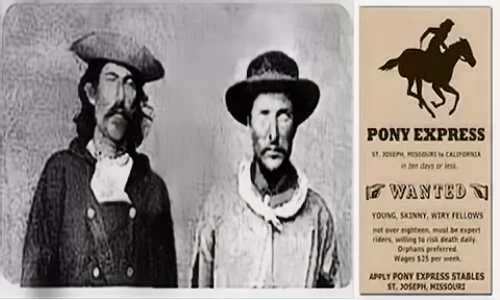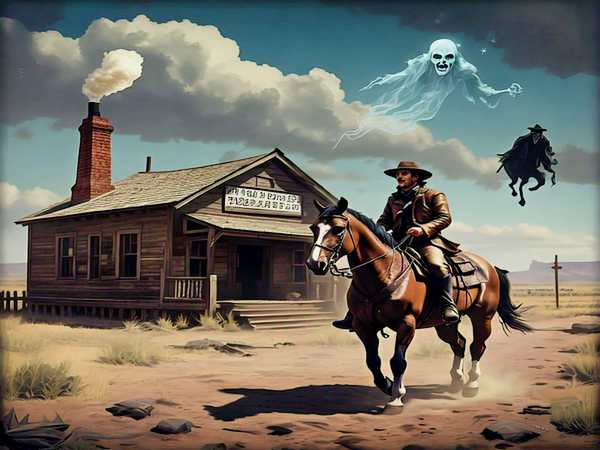The Legendary Ride of the Pony Express: The West’s Most Daring Mail Service
The Pony Express stands as one of the most legendary endeavors in the history of the American frontier. It lasted only 18 months, but during that brief time, it transformed how mail was delivered across the vast and dangerous landscape of the western United States. The courage and determination of the riders who undertook this perilous task exemplify the bold spirit of America during the 1860s. From its inception in 1860, the Pony Express provided an innovative solution to a pressing problem and ultimately etched its name into the annals of American history.
A Solution to a Growing Problem
By 1860, the United States was expanding rapidly westward, but the infrastructure to connect the East with the burgeoning settlements in the West lagged far behind. The telegraph and railroad systems stopped at St. Joseph, Missouri, meaning that any mail traveling to California or beyond had to endure a long and arduous journey by stagecoach or wagon. This process could take three weeks to a month, frustrating businesses and families who needed faster communication.
Recognizing the need for a quicker solution, the founders of the Central Overland California and Pikes Peak Express Company launched the Pony Express in April 1860. They advertised for young, skinny riders, no older than 18, who were willing to risk their lives daily. Preferably, these riders were orphans, reflecting the dangerous nature of the job. In response to this daring call, 183 men signed on to ride for the Pony Express, their ages ranging from as young as 11 to as old as 45. Most were in their early twenties, weighed no more than 125 pounds, and were paid a handsome $25 per week for their services.

The Epic Relay Across the Frontier
The operation of the Pony Express was a finely-tuned relay system that stretched across eight states: Missouri, Kansas, Nebraska, Wyoming, Colorado, Utah, Nevada, and California. Riders were tasked with covering between 75 to 100 miles of this 2,000-mile route before passing the mail onto the next rider. They rode tirelessly, navigating the rugged and often dangerous terrain on mustangs, pintos, thoroughbreds, and Morgans—horses chosen for their speed and endurance. Each rider received a fresh horse every 10 to 15 miles, keeping the pace swift at an average speed of 10 miles per hour.
The key to the Pony Express’s efficiency was a special saddlebag known as a mochilla. This lightweight saddlebag, placed beneath the rider’s seat, had four locked pockets called cantinas. These pockets held the letters and packages securely, and the rider sat on top of the bag to ensure it stayed in place. Capable of holding up to 20 pounds of mail, the mochilla was the heart of the operation.
As the riders raced through the frontier, they faced countless challenges. In addition to the grueling distance, they had to contend with treacherous weather, rough terrain, and the ever-present threat of Native American attacks. The Sierra Nevada Mountains posed the greatest challenge of all, with their steep trails and heavy snowdrifts in the winter months. Despite these dangers, the Pony Express prided itself on speed and reliability, delivering mail from St. Joseph to Sacramento in a remarkable 10 days.
The Risks of the Journey
Though many riders faced harrowing situations, a few standout tales of bravery and determination cemented the Pony Express’s legendary status. Perhaps the most famous rider of all was a young William “Buffalo Bill” Cody, who began riding for the service at the age of 15. Cody’s exploits as a Pony Express rider contributed to his later fame as a frontier showman and American folk hero.
In one particularly impressive feat, the Pony Express set a record time of 7 days and 17 hours for delivering President Abraham Lincoln’s inaugural address to California. Over its short existence, the service delivered roughly 35,000 pieces of mail and covered over 65,000 miles. Remarkably, only one saddlebag of mail was ever lost during this time.
Despite its daring spirit, the Pony Express came with a steep price tag. Initially, it cost $5.00 to send just half an ounce of mail, a considerable sum for the era. Though this fee eventually dropped to $1.00 per half ounce, it was still a luxury that few could afford regularly.
The End of an Era
The Pony Express’s rapid rise was matched only by its equally swift demise. Several factors contributed to the end of this short-lived enterprise. First, the completion of the Pacific Telegraph Line in 1861 provided a faster and more efficient means of communication between the East and the West. Messages could now be transmitted in minutes rather than days, rendering the Pony Express obsolete. Additionally, the outbreak of the Civil War further strained the company’s finances, preventing them from securing a lucrative government mail contract.
By October 1861, the Pony Express had officially closed its operations. Many of the more than 100 stations along the route fell into disrepair, with only a few preserved as historical landmarks. One of the best-preserved stations is the Hollenberg Station in Kansas, thanks to the efforts of the local community. Originally established in 1857 by Gerat and Sofia Hollenberg as a waystation for travelers along the Oregon and California Trails, the station became a key stop for Pony Express riders during the service’s brief existence.
Today, the Hollenberg Station operates as a state park, complete with a museum and visitor center that tell the story of this extraordinary chapter in American history. The station is not only a historical site but is also steeped in lore. Numerous visitors and staff members have reported paranormal activity in and around the station. Sightings of ghostly riders in old-fashioned clothes, the sound of thundering hooves, and unexplained cold spots have been reported both day and night. Some even claim to have seen the apparition of a young rider with arrows protruding from his back, lying in one of the station’s bedrooms as if reliving his final moments.
Legacy of the Pony Express
Although the Pony Express was short-lived, its impact on American history and culture remains profound. It showcased the bravery and determination of the riders who risked their lives to ensure swift communication across a vast and dangerous frontier. Today, the Pony Express stands as a symbol of the pioneering spirit that drove the expansion of the United States into the West.
From its creation as a bold solution to a pressing problem to its enduring legacy as one of the most daring ventures in American history, the story of the Pony Express continues to capture the imagination of people around the world.

